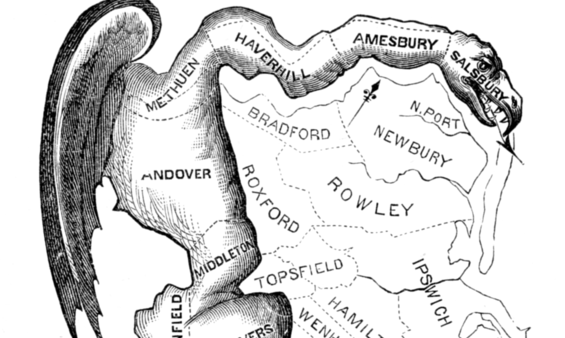When lawmakers control the redistricting process - as they do in most states - self-interest inevitably plays a big role in how electoral maps are redrawn. It puts the power in the hands of incumbent legislators eager to squash political competition. A Republican lawmaker would likely want to redraw his own district to include as many Republican voters as possible; and vice-verse for a Dem.
This is called gerrymandering - the process of redrawing electoral maps (usually into odd shapes) for the sake of political advantage. It's a practice that's been in play pretty much since our democracy began. The practice is named after Massachusetts Governor Elbridge Gerry, who in 1812, influenced how his state's electoral districts were drawn so as to to directly benefit members of his own party. It was said that the strange shapes of the new district maps resembled a salamander.
Hence ... gerrymander!

The big list of redistricting no-no’s
Despite ongoing attempts to reform the process, redistricting in many states has long been fraught with corruption and racial discrimination. And it often is at the expense of disenfranchised communities. Here’s a list of some of the most notorious tactics:
Cracking: Splitting a community into multiple districts in order to reduce its political influence. Prior to the 1965 Voting Rights Act, African-Americans throughout the South were frequently split apart by district lines in order to prevent them from electing their own candidates.
Packing: Isolating “unfriendly” voters into one political district to minimize their influence in neighboring district races. When racially motivated, this process is called “bleaching.”
Hijacking: Intentionally drawing lines that put two unfavorable incumbents into the same district to compete against each other.
Kidnapping: Intentionally drawing new district lines that place an unwanted incumbent in a district where he/she doesn’t live.
